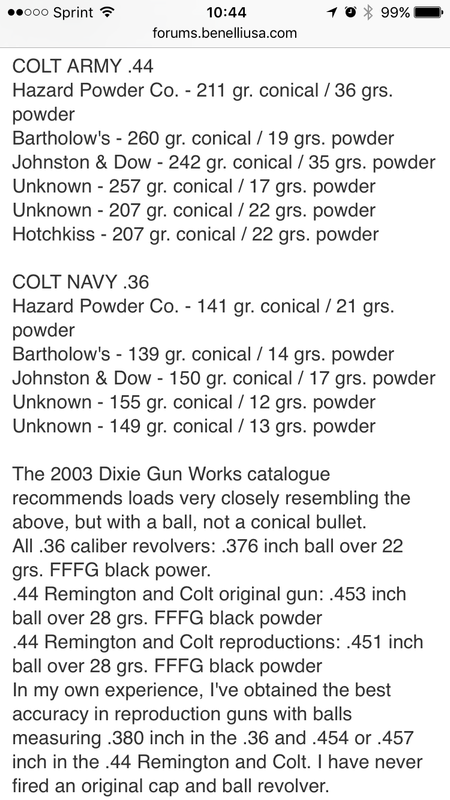Crypt0manic
40 Cal
- Joined
- Jul 30, 2021
- Messages
- 178
- Reaction score
- 45
Hey! I have been reading about different loads and i somewhere read that uberti and the other replicas usually got harder steel then the original 1858 produced old remington cal .44 like the one i got.
So what i wonder about is how much harder steel etc the replicas got?
And in case you want to make out max power out of a old original remington 1858 what's the charge you would do? I mean one that isn't any type of replica.
http://poconoshooting.com/blackpowderballistics.html
i have been reading about a bunch of crazy loads here on this website for ballistics of bp guns and i see him loading a rem 1858 with 50 grains of Pyrodex. Max i have done is 30 grains of bp because i don't want to damage the gun. So i don't get how you can get such hard loads in a remington 1858 without anything happening? Is that because it's a new production a replica of harder steel or i could do the same with my old 1858 rem? Mostly curious i never tried anything else except black powder so far.
So what i wonder about is how much harder steel etc the replicas got?
And in case you want to make out max power out of a old original remington 1858 what's the charge you would do? I mean one that isn't any type of replica.
http://poconoshooting.com/blackpowderballistics.html
i have been reading about a bunch of crazy loads here on this website for ballistics of bp guns and i see him loading a rem 1858 with 50 grains of Pyrodex. Max i have done is 30 grains of bp because i don't want to damage the gun. So i don't get how you can get such hard loads in a remington 1858 without anything happening? Is that because it's a new production a replica of harder steel or i could do the same with my old 1858 rem? Mostly curious i never tried anything else except black powder so far.









